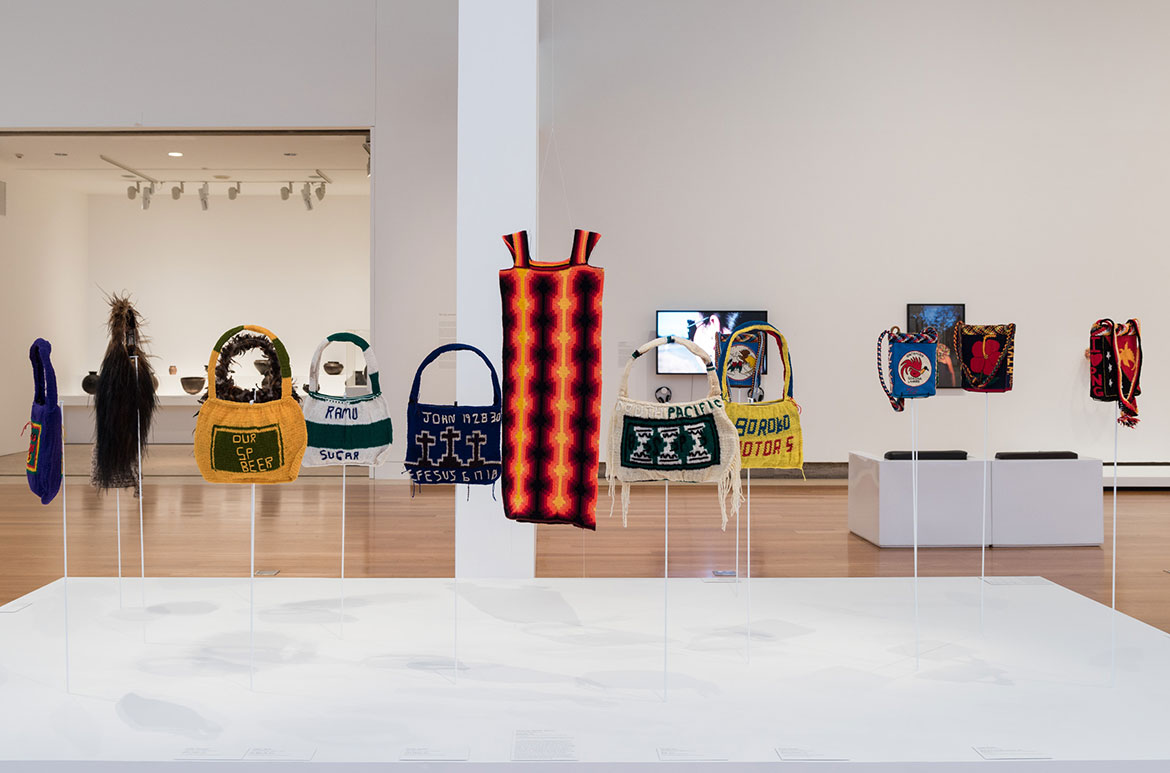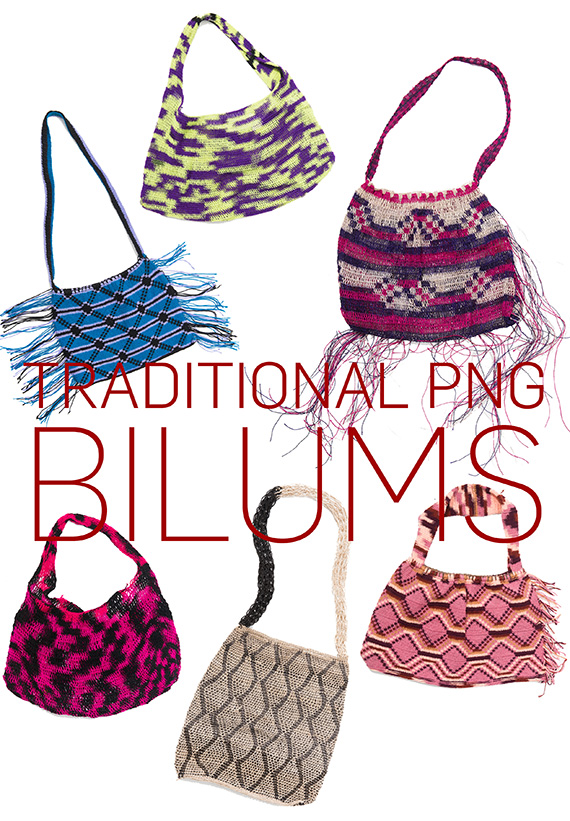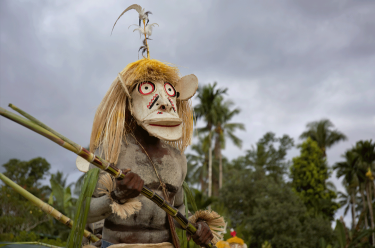For centuries, the bilum bag has been made from natural fibres native to Papua New Guinea. Strips of leaves, grasses or tree bark are battered and scraped until the plant matter becomes fibrous then dried in the sun. Once dried, fibres are twisted between the hand and thigh into a single strong yarn. This is a very time consuming process, a lot of yarn is required to weave a bilum bag and only experienced weavers know when the yarn has been twisted enough. Colour can be added to the yarn by burying it in mud to get a variety of tones, alternatively fruits, vegetables and leaves can be a source of colour. Once coloured, the yarn is then made into a bilum through a process know as looping with a needle.
Utilitarian in its functionality and stunning in its creative expression, a bilum is the traditional string bag made by PNG women. This traditional craft is a skill passed from generation to generation. A bilum is made in a variety of shapes and styles depending on its purpose. The patterns reflect provenance, current events and stories; each bag is imbued with layers of rich historical, cultural and symbolic significance.
A traditional woman’s bilum has a short, wide handle that fits around the forehead, so the bag hangs down her back and leaves her hands free. Her bilum can expand to ten times its ‘resting’ size when filled with firewood, harvested yams, and often a baby coddled comfortably in a blanket!

Know Brisbane through the QAGOMA Collection / Delve into our Queensland Stories / Read more about Australian Art / Subscribe to QAGOMA YouTube to go behind-the-scenes
‘No. 1 Neighbour: Art in Papua New Guinea 1966-2016‘ / Queensland Art Gallery / 15 October 2016 – 29 January 2017
#QAGOMA

